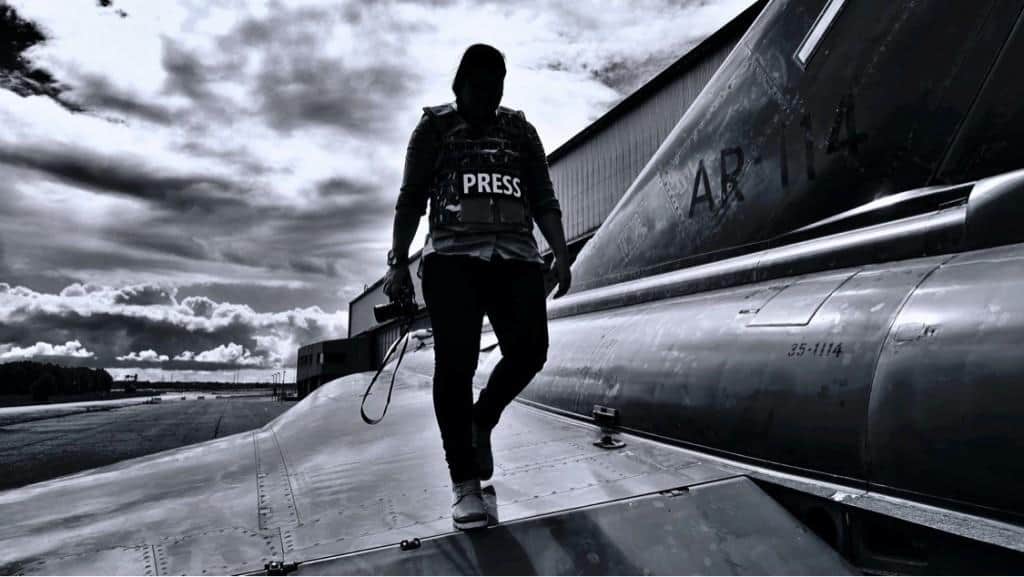Sandra Vidrequin is a photojournalist and documentary filmmaker with a military background. She’s been covering protests and conflict since 2008, including the 2011 Egyptian revolution, Colombia and across Europe.
A black-belt martial artist, the speaker of seven languages including Arabic and Italian, and a single mum to four sons (who joined her in Egypt when she was working there), Sandra is also a part-time soldier in the Norwegian Armed Forces.
Sandra speaks to battleface’s Travel & Safety Magazine about her experiences in photojournalism and how her unique background has informed her career.
You’ve worked in some pretty volatile places, including during the Egyptian revolution. What steps do you take to ensure your personal safety in situations like that?
I was in Egypt, at the end of 2010 and beginning of 2011. Cairo wasn’t a very safe place to be, but I managed to take pics, and as I’ve mentioned before, personal safety came behind getting good pictures.
Were there any specific moments in Egypt when you felt threatened?
At the time of the Egyptian revolution, chaos and tensions between the people and the Egyptian military was ruling the streets. I felt in danger of my life as I was taking pictures between riots. I’d be in the midst of angry gangs of men, some would like the attention, some didn’t, and in some occasions I had to get out of there real quick not to get in harm’s way. I’ve felt hands going where they shouldn’t be, then again they’d be surprised by me just giving them a real punch! I might mention that I’ve trained martial arts all my life and do know how to defend myself. Let’s say I got respect pretty fast then.

Does your military experience play a part in how you prepare for projects? And are there lessons that other conflict photographers could learn from that?
My new army training can of course play an important role in how I approach future assignments in conflict areas. I just have to remember that my weapon is my camera and not a fully-automatic army rifle. Combat techniques might come in handy in the future, but I haven’t used them in the past. I’m now looking to get deployed with the army, I’d bring my camera, of course, and document life as a soldier abroad. If not I’d look into going as a civilian. Time will show.

You’re a serious polyglot. How useful was Arabic when you were covering the Arab Spring? Did having a basic knowledge of the language get you out of any tight situations?
Languages comes easy to me, I’m like a sponge when it comes to languages and cultures. It makes a great difference when it comes to gaining people’s trust and their loyalty. “Sahafiun” (journalist) is the first word I learned in Arabic, then came phrases, and before I knew it, I could understand and speak basic Arabic. The people in the Middle East are very welcoming.

Conflict photography can often be seen as a bit of a ‘boy’s club’. What advice would you give to women who are trying to make it as a conflict or higher-risk photographer?
Conflict photography, combat photography and war photography is a bit of a ‘boys’ club, but I’ve gained respect and trust in the business and I’m a tomboy character, so I glided in easily. There is an advantage in being a woman in many aspects, like connecting with the women in the Muslim communities, I’d come closer than any man would, just being a woman. Women tend to trust other women.

Tell us about your kit. What camera do you travel with? Are there any other travel essentials that make working in the field easier?
My kit is a mix between many components. My favourite brand of camera is Fujifilm. I use the Fujifilm X-T3 and X-H1 and a collection of lenses such as my favourite lens, the 50-140mm f2.8, 10-24mm f4 and 35mm f1.4. I always bring 2 flak jackets with PRESS patches, microphones, laptop and international press credentials. The reason I use Fujifilm is that it’s resilient and weather proof. I have draped it with a skin, so that it can take scratches and bumps. I’m very happy with Fujifilm.

You mentioned flak jackets. What about helmets? And what was your criteria for choosing these types of protective kit?
I have four flak jackets, different protective levels, depending where I travel and the need for it. Some are heavy, big and protect more, some smaller and less heavy, but easier to get around with. I mostly use level IIIA and, of course, a ballistic helmet where it’s needed. Sometimes a press vest or flak jacket may put a bullseye on your body, because some people don’t want news to come out. Sometimes it’s easier to go out with nothing other than your camera and press credentials. Everything is individual decision-making, it’s all relevant. The camera itself is an attention drawer, sometimes positively and sometimes negatively.
Someone who’s travelled as much as you, can’t have found lockdown easy. Where will you be heading next as travel starts to reopen?
COVID-19 has taken a toll on many travellers, I just received my first vaccine dose and I’ll get the second one mid October, then I’ll be all set to travel or deploy, it all depends on my circumstances.

Finally, what is one image that you’re particularly proud of from your photojournalism? Is there a story behind it?
I have pride behind every image I take, but when I capture innocence in children’s eyes or pure hearted civilians, it moves me, like poor street kids, you can see their innocence and hard life at the same time in their expressions.
For more about Sandra and her work, visit her personal Instagram here or take a look at a collection of her press work here.










